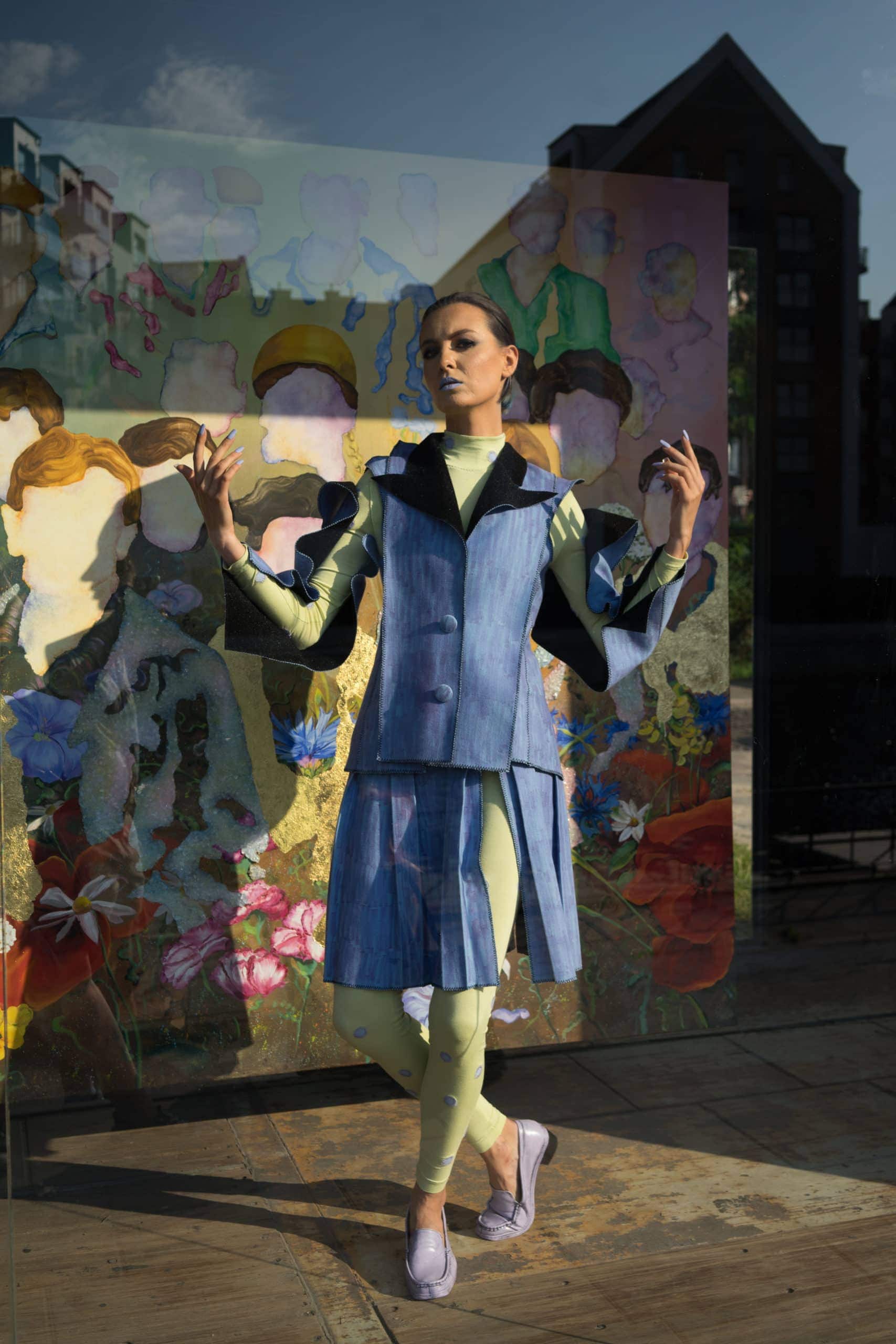

Tell us a bit about yourself – where are you from?
I was born and raised in a small town in Poland called Wąbrzeźno. I studied in a regular high school in my town because my parents couldn’t afford sending me to an art high school in another city, as my sister was still a university student at that time. After I graduated high school, I really just wanted to go anywhere far away! I found TEKO in Denmark. They offered a fashion course in English, which was both free and far away from home, so I did my BA there.
There I met Ike Rust, a guest tutor who really believed in my work, and this gave me a lot of confidence. He told me to go to London and apply to a new menswear course at Westminster. I went to London, but in the end I chose CSM because that place was a dream of mine for a long time, and I was very shocked to get accepted on the spot so I just couldn’t miss that chance.



How have intensive dating and the men in your life driven the narrative and visuality of your MA collection?
London was a place where, after five years of being in a relationship, I was suddenly single. There are so many gays in every shape and size, so it was very overwhelming! I’m quite a reserved person – ‘intensive dating’ sounds like I had a different guy every night, which I definitely hadn’t. The ‘intensity’ refers to the realisation (after a number of online dates) that I’m quite a vulnerable man, and I get easily attached.
The ‘intensity’ refers to the realisation (after a number of online dates) that I’m quite a vulnerable man, and I get easily attached.
I carry thoughts of a man for a long time, hence the sculptural body shaped pieces I made for my graduate collection. They represent the thought of being rejected or rejecting somebody, but still carrying them around with you. I design clothes for myself and men whom I fancy. I try to highlight characteristics that I value in men translated into my fashion — characteristics such as softness, childlike curiosity and confidence.



Do the referenced objects have specific meanings? (for example, the giant visor?)
I made those pieces for my pre-collection, which was my first successful project at CSM. I was inspired by the soft art of Claes Oldenburg, Erwin Wurm and Folkert De Jong. I don’t think I had any symbolism particularly for choosing a visor. I was wearing one at that time, and I just wanted to make a bigger and softer version of it and completely change its initial use (in the spirit of Claes Oldenberg).
I think the first iteration of it came during a tutorial with Julie Verhoeven. I wanted to express metaphorical and physical softness and vulnerability. It also presented an opportunity for me to play with proportion and colour. It was a starting point for my graduation collection, and it really helped me establish my identity.
I wanted to express metaphorical and physical softness and vulnerability. It also presented an opportunity for me to play with proportion and colour.



Tell us about your latest project and its showing in Gdańsk during Justyna Górowska’s performance „Chwała bohaterkom!” (“Glory to the heroines!”)
I was invited by Marcin Różyc to create a costume for a performance celebrating women of revolution who quietly helped to collapse communism in Poland. Last year, we celebrated the 30th anniversary of freedom in Poland. Marcin wanted to present the concept in various media — photography, painting, performance and fashion.





I prepared several ideas for the costume, and together we chose a skirt suit characteristic of the women we wanted to celebrate. The suit was made of jersey which was painted with a marker and bonded with Velcro fabric. It was attached to a bodysuit embroidered with dots of Velcro, and Justyna could reposition and remove pieces of the suit during her performance.
For me, that costume represents female power and freedom of expression. The whole outfit was in my favourite pastel colours, which perfectly corresponded with painting by Marcin Janusz. It was all part of Niefestiwal in Gdańsk, where they featured a vast number of great Polish artists.
What are you currently working on?
On my next collection!


